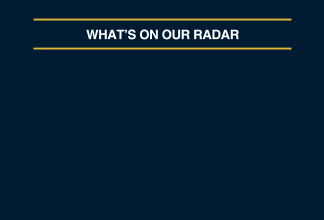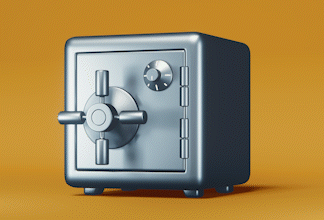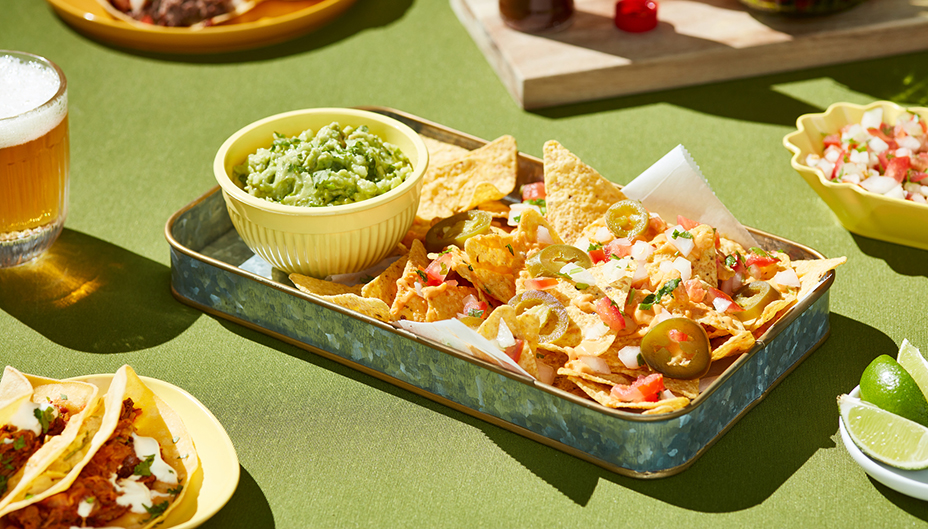Consumer Spending – Part 2: The Latest on Where Canadian Cash Is Going
Written by The Content Team
Published on August 6, 2020
minute read
Share:
Restrictions are slowly easing all over the country. How is this affecting Canadian spending? Mostly it's back on track, compared to last year's levels, but there are a few notable exceptions.
We're back with another pulse-check on Canadian spending with insights from our colleagues and RBC Economics' COVID Consumer Tracker, a series of reports summarizing anonymized cardholder data from recent months. (Read our previous consumer spending summary here.)
Groceries & Dining
The way people shop for food continues to evolve. For example, as one of our colleagues says, “Groceries-wise, we're shopping at different locations, focusing on which ones are less crowded." This is echoed by another co-worker who will delay food shopping if he sees a long line at the store. One colleague gave grocery delivery a go earlier on in the pandemic, but has chosen to return to in-store. Another cut her grocery runs down from weekly to twice-monthly in March, but has recently returned to her regular cadence: “This is much more manageable," she says, adding that she's also stopped wiping down every item she's bought.
Meanwhile, “dining spending remained below last year's levels by 10 per cent," says the latest consumer tracker report. Here's how this played out: Ordering meals continues to see elevated spending, as compared to last year. Purchasing at quick-service restaurants is near-normal. But “in-person dining struggles to return to normal in the age of social distancing," says the report. On this point, our colleagues are split. While some have held off – “I'm not ready to eat out a restaurant yet," says one – others have made tentative steps into outdoor dining: “My fiancé and I have ventured out to two patios," says a colleague. “I was craving bar nachos and an Aperol Spritz."
Travel & Entertainment
Globetrotting is still far from people's minds – as an operations team member succinctly puts it, “I am terrified of travelling at the moment." It is no surprise, then, that spending on travel is down two-thirds, as compared to this time last year, according to the report. But, it says, “a slight recovery in travel spending continued, led mainly by car rentals and accommodation spending, as discounts encouraged Canadians to vacation close to home." Case in point: one of our co-workers just booked a last-minute deal for a family getaway at a nearby resort. Another recently rented a cottage from friends and one has a few camping trips on the calendar.
“We're just doing day trips for now," says our associate content producer. “I'm still hesitant to stay in an Airbnb or hotel." In that vein, some areas continue to see below-average spending, specifically those that rely on gatherings. Says the report: “Entertainment spending remained about 20 per cent below last year's levels as Canadians eschewed galleries and museums, and large events remained a no-go."
Personal Care
Our compliance manager had a standing appointment booked at his barber every week since May. When his city entered Stage 2, he was able to get a much-needed cut. Another co-worker also saw her hairdresser as soon as she was able. “It was a little odd having a mask while your hair is being washed and blow dried," she says, “but my hair needed some love." Yet some team members have adopted a DIY approach or are embracing longer locks, which the cardholder data seems to reflect. “Canadians adjusted to less frequent haircuts and in-person self-care," says the latest report. After a strong recovery in at the beginning of June, states the report, self-care spending – which encompasses massages and gym visits, in addition to hair care – plateaued.
To that end, while one co-worker is planning on booking gym time when the option presents itself, and another is back to her regular physio appointments, many are resigned to keeping fit at home for now. “I'm an avid yogi and was all about the in-class experience, but I've surprisingly found some really great online classes," says one. “I'm not sure when I'll be open to physically going back to the studio."
Discretionary Spending
Clothing shoppers have returned with force, says the report. “Spending on apparel, gifts and jewelry tracked close to year-ago levels, and was down just 1 per cent by mid-July," it states. Some colleagues exemplify this with recent additions to their closets. Says our senior content producer, for example: “My husband was ordering some new T-shirts online, so I did add on a couple of shirts to add to my casual WFH wardrobe." Similarly, with no special occasions on the calendar, one colleague didn't need much, but she did pick up a few tops and flats at an outlet recently.
The data shows healthy spending in other retail categories, too, “with volumes at household and department and specialty stores remaining well above levels seen last year." Says our associate producer: “The most I've probably spent on during quarantine is the house. Random stuff for the kitchen, furniture. Last week, I bought a tortilla press (unlike most people, my chef phase of quarantine is still going strong)." An operations team member echoes this sentiment: “I have gone a little crazy sprucing up my home decor," she admits.
Online Takes Root
Where are most of these purchases being made? The report is clear: “Online spending holds strong, as Canadians avoid the mall." Remote spending, which spiked at the onset of the pandemic, continues in popularity, even as things are opening up, it says, “with some categories seeing a lasting shift toward more frequent virtual purchases." As one colleague puts it: “I've done a ton of online shopping. I've bought some golf equipment, gaming equipment, clothes and a razor for shaving my head. Nothing in-store."
RBC Direct Investing Inc. and Royal Bank of Canada are separate corporate entities which are affiliated. RBC Direct Investing Inc. is a wholly owned subsidiary of Royal Bank of Canada and is a Member of the Investment Industry Regulatory Organization of Canada and the Canadian Investor Protection Fund. Royal Bank of Canada and certain of its issuers are related to RBC Direct Investing Inc. RBC Direct Investing Inc. does not provide investment advice or recommendations regarding the purchase or sale of any securities. Investors are responsible for their own investment decisions. RBC Direct Investing is a business name used by RBC Direct Investing Inc. ® / ™ Trademark(s) of Royal Bank of Canada. RBC and Royal Bank are registered trademarks of Royal Bank of Canada. Used under licence. © Royal Bank of Canada 2020.
The views and opinions expressed in this publication are for your general interest and do not necessarily reflect the views and opinions of RBC Direct Investing. Furthermore, the products, services and securities referred to in this publication are only available in Canada and other jurisdictions where they may be legally offered for sale. If you are not currently resident of Canada, you should not access the information available on the RBC Direct Investing website.
Explore More

Here’s What Every Canadian Should Know About Estate Planning
Insights from Leanne Kaufman to help you feel more confident as you plan
minute read

3 Things We're Watching This Week
What the Inspired Investor team is watching
minute read

What’s Driving the Recent Surge in Gold Prices
Here are some things to watch with the gold market
minute read
Inspired Investor brings you personal stories, timely information and expert insights to empower your investment decisions. Visit About Us to find out more.







